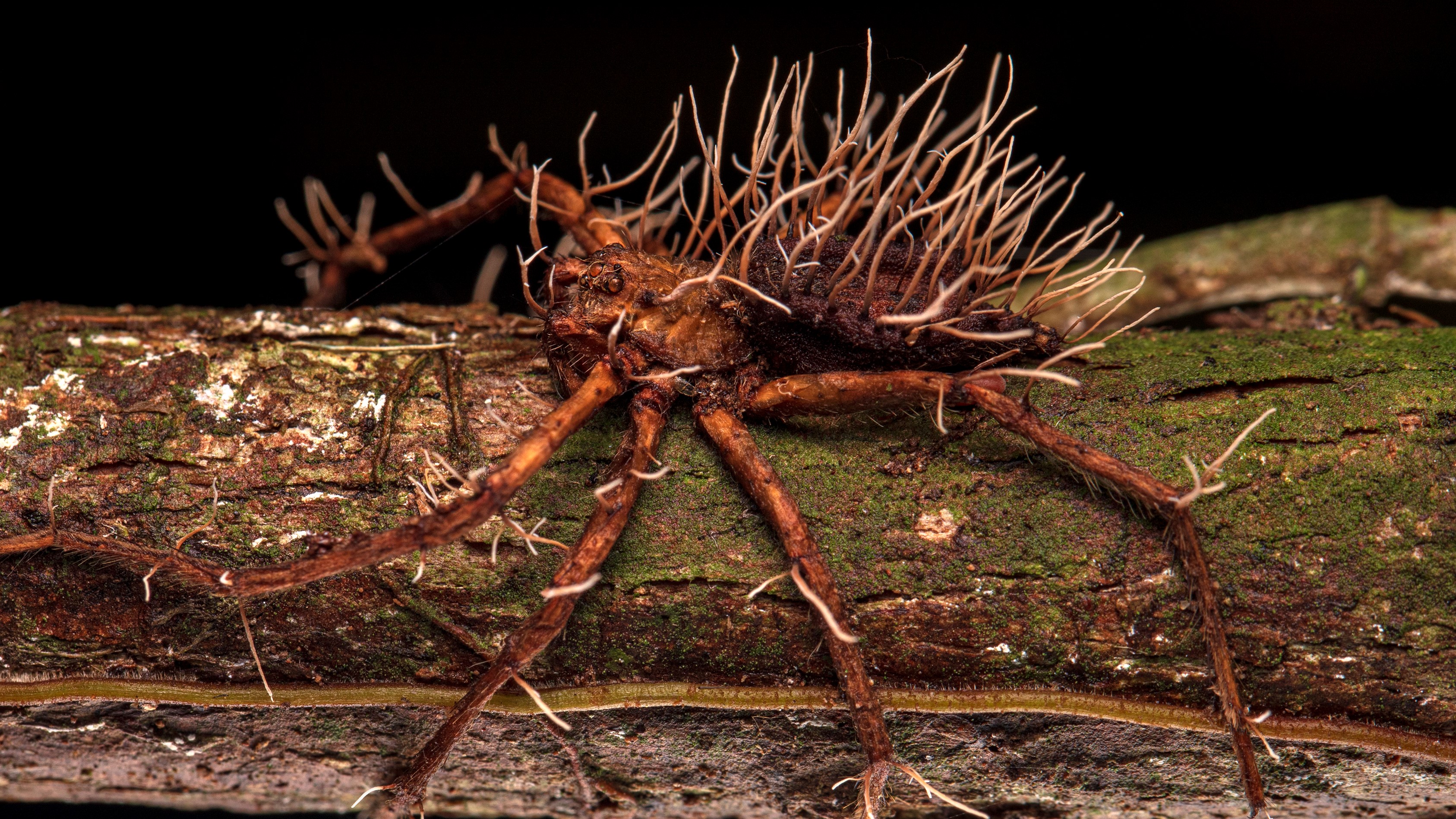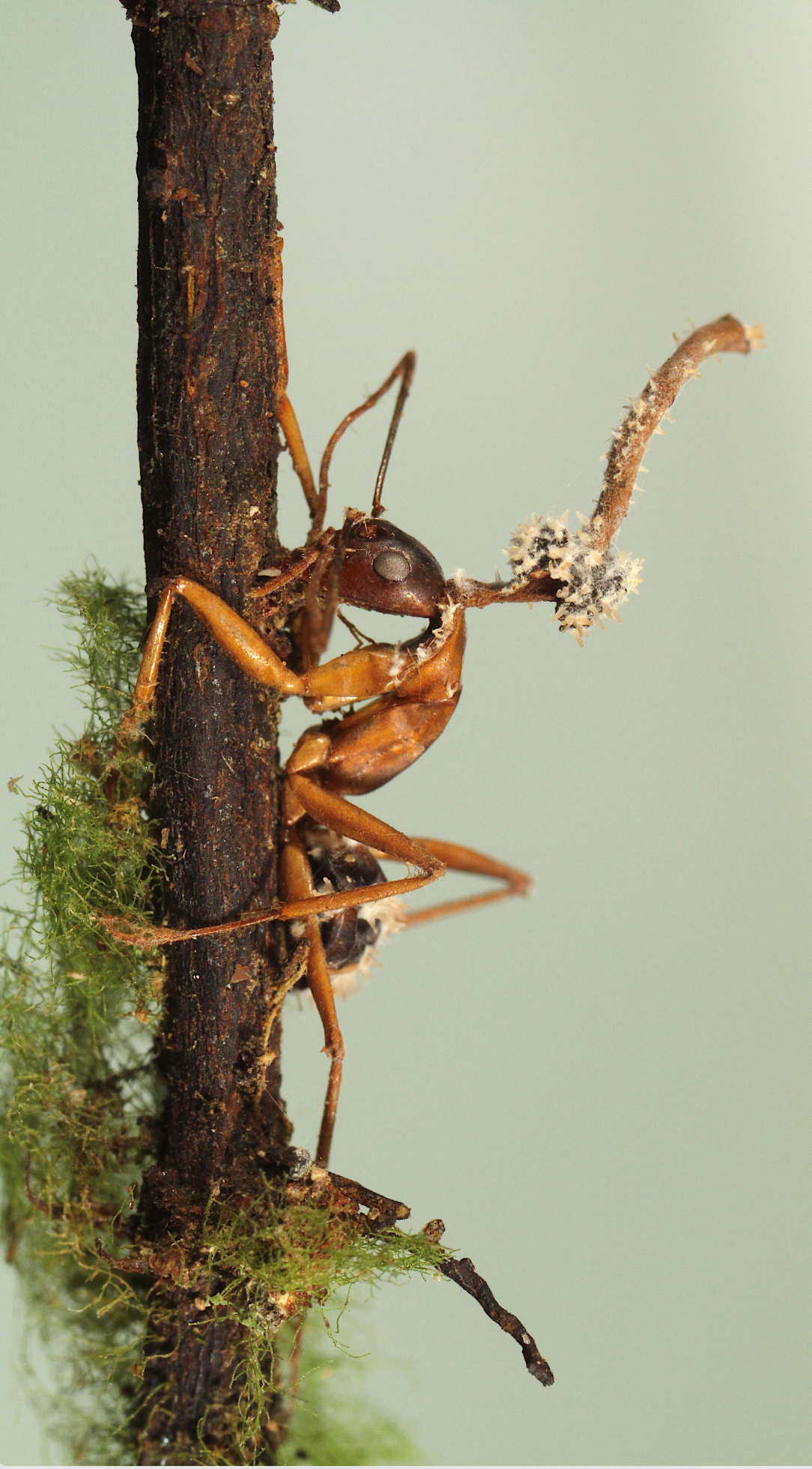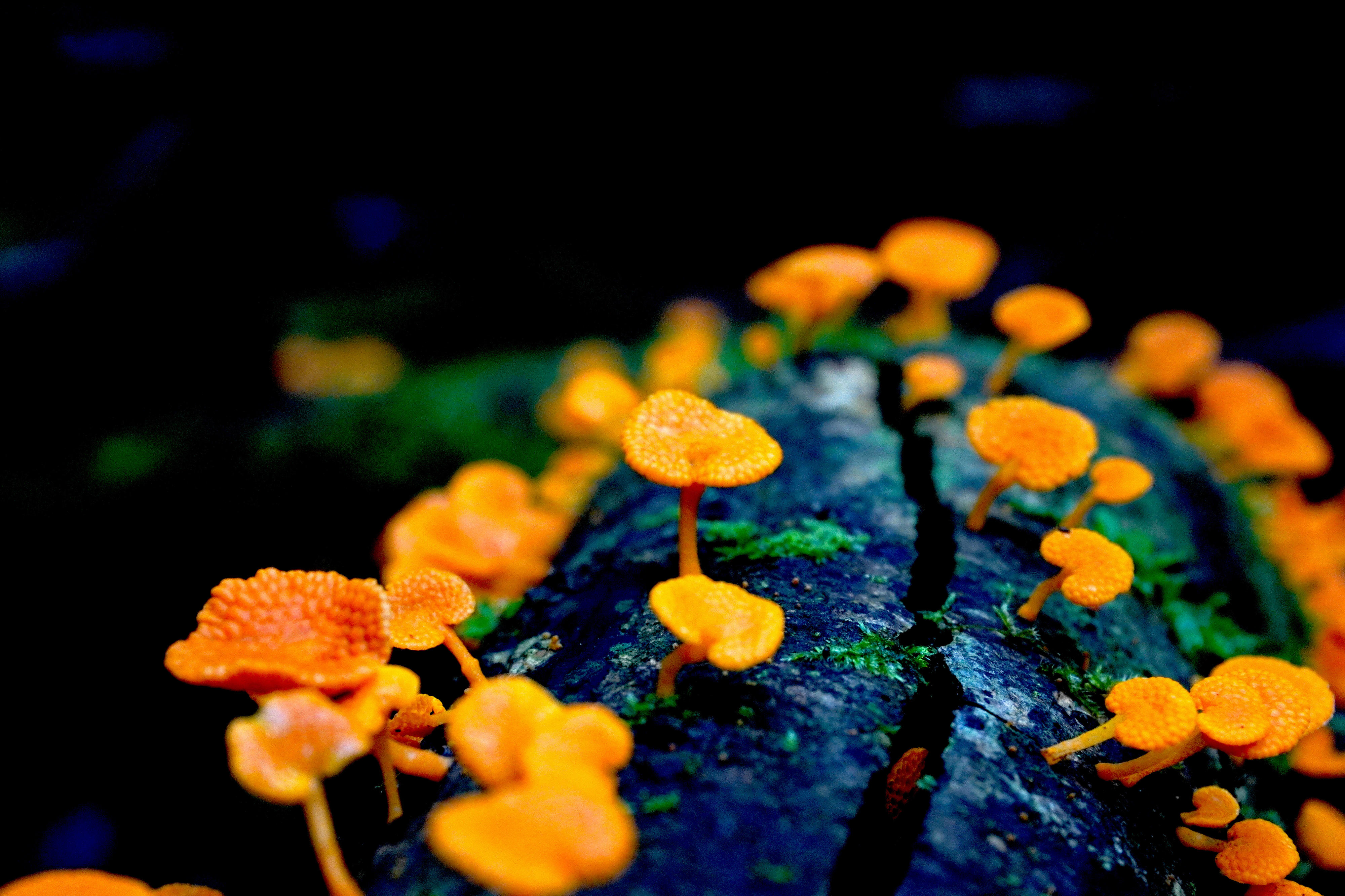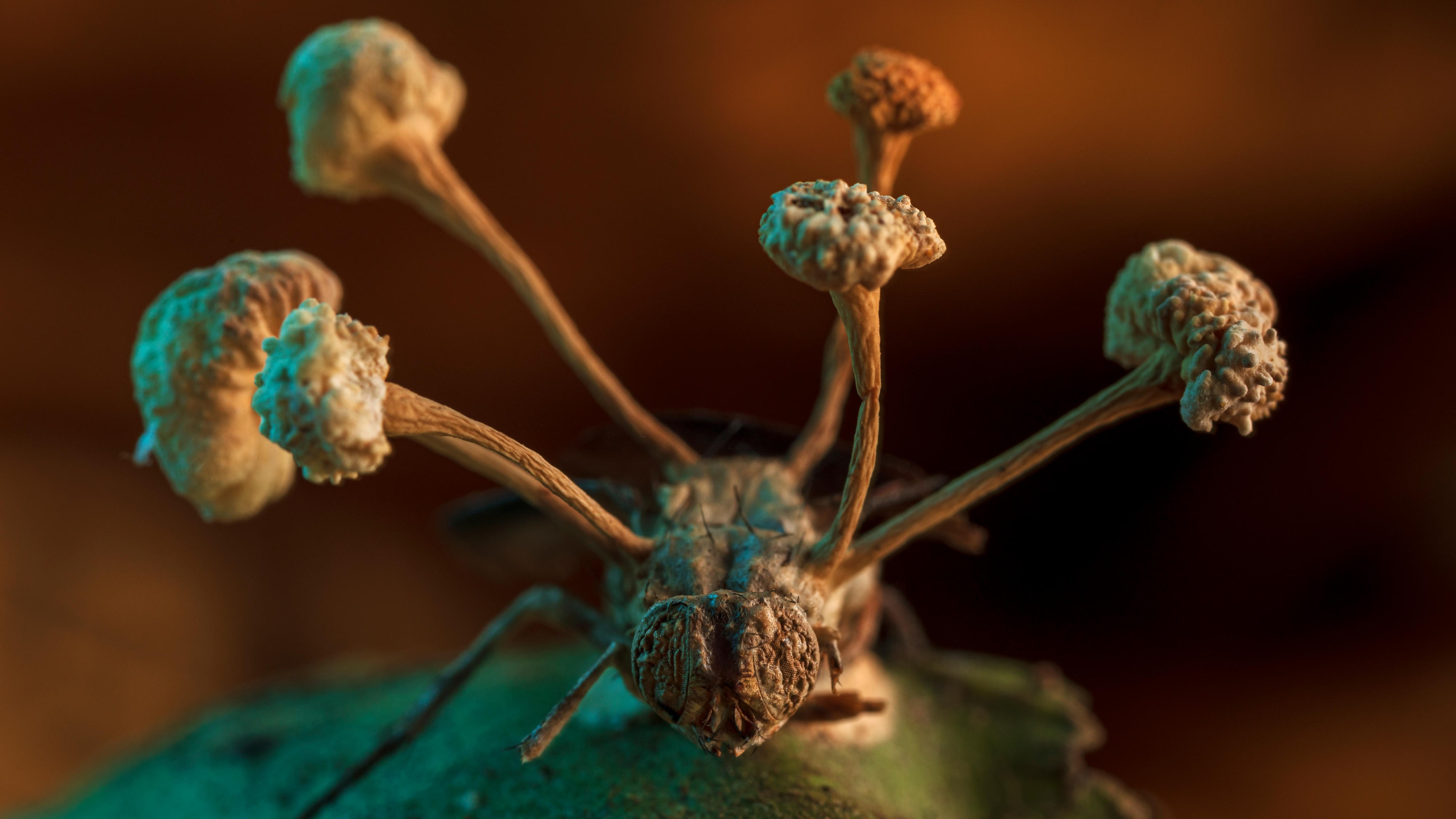
A rare image has captured the moment a huge spider is "defeated" and engulfed by a parasitic fungus, with spores bursting from the arachnid's back, legs and head
The striking photo is one of the winning images from the BMC Ecology and Evolution photography competition. The picture, taken by evolutionary biologist Roberto García-Roa, was named runner-up in the Plants and Fungi category.
"While it is not uncommon to encounter insects parasitized by 'zombie' fungi in the wild, it is a rarity to witness large spiders succumbing to these fungal conquerors," García-Roa wrote in a BMC Ecology and Evolution editorial released Friday (Aug. 18). "In the jungle, near a stream, lies the remains of a conquest shaped by thousands of years of evolution."
Related: In a 1st, man catches 'silver leaf,' a tree fungus never before seen in humans
Many species of fungus are known to parasitize spiders, and instances of parasites bursting from the bodies of dead arachnids have been recorded across the globe. Most species belong to the Cordycipitaceae and Ophiocordycipitaceae families. The species of spider and fungus in García-Roa's image are not known, but the fungus appears to have entered its host and taken over the spider's body.

The BMC Ecology and Evolution photography competition invites researchers from around the world to put forward images that capture the natural world. The winning entry in the Plants and Fungi category shows an ant that had been taken over by a zombie fungus —Ophiocordyceps — which was, in turn, parasitized by another fungus. Ophiocordyceps is a genus of parasitic fungi known for its ability to turn ants into zombies, controlling their bodies before killing them.
"The forests these fungi inhabit are also shared with mycoparasitic fungal lineages that can parasitize, consume and even castrate Ophiocordyceps," João Araújo, a mycologist at the New York Botanical Garden who submitted the category-winning photo, wrote in the editorial. "Only recently scientists have started to catalogue and describe these still unknown fungi that can kill other fungi."
The overall winner of the 2023 competition was an image of the invasive orange pore fungus (Favolaschia calocera). The species was first identified in Madagascar and has since spread across the world. The photograph shows the fungus growing on deadwood in the Australian rainforest.

"Despite its innocent and beautiful appearance, the orange pore fungus is an invasive species that displaces other fungi and is spreading throughout the Australian rainforest," Cornelia Sattler, from Macquarie University in Australia, who took the photo, wrote in the editorial. "It is important to closely monitor this fungus, whose spores are often transported by humans, in order to safeguard the biodiversity of Australia."

The overall winner of the 2022 competition also featured a parasitic fungus. García-Roa's winning image, taken in the Peruvian jungle, shows spores of the zombie fungus Ophiocordyceps erupting from the body of a fly.







